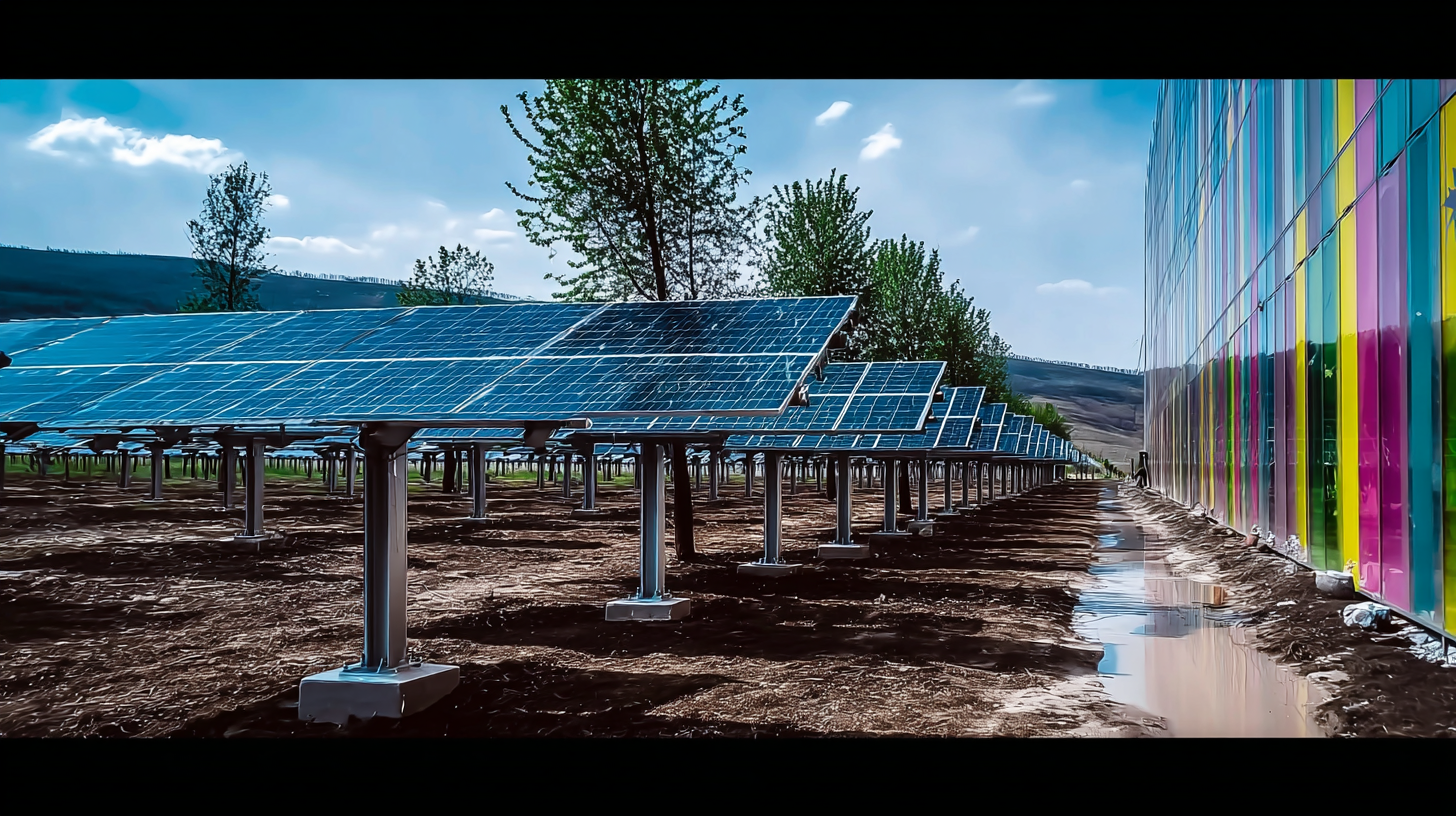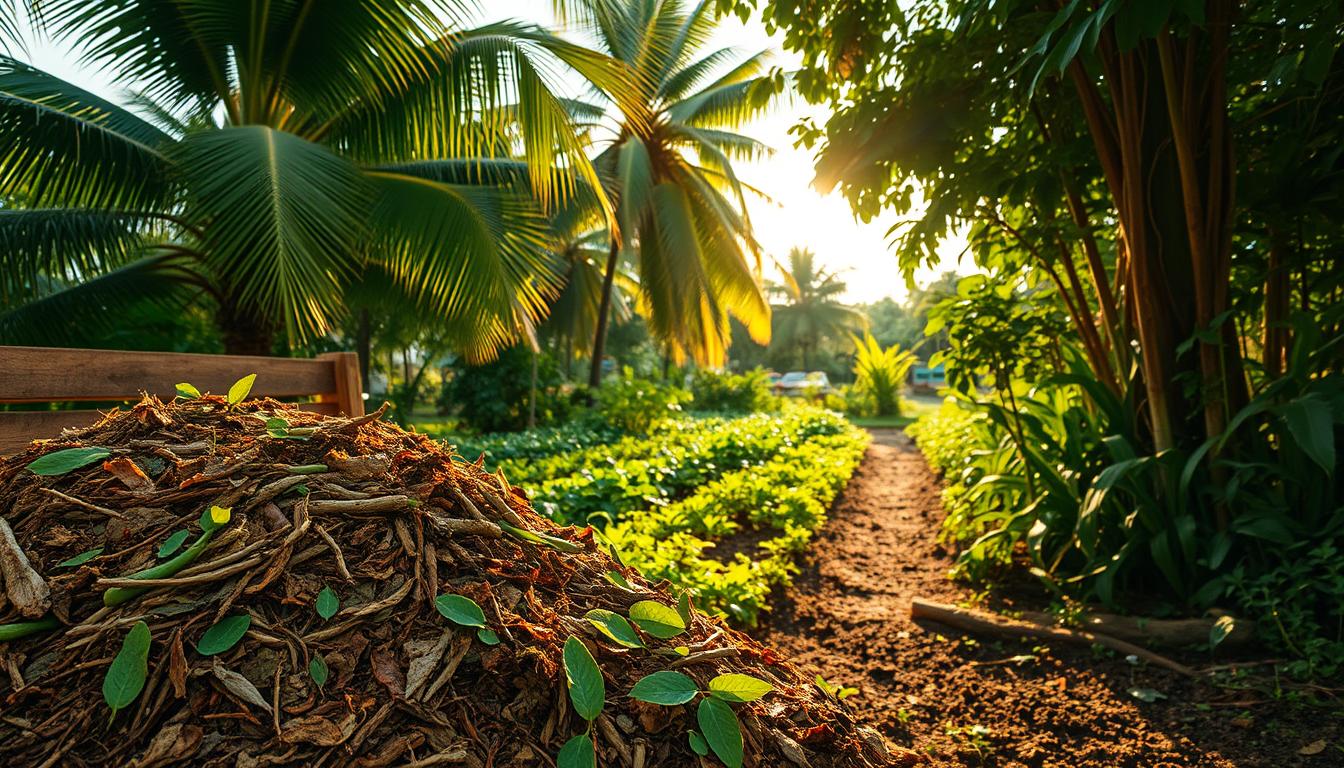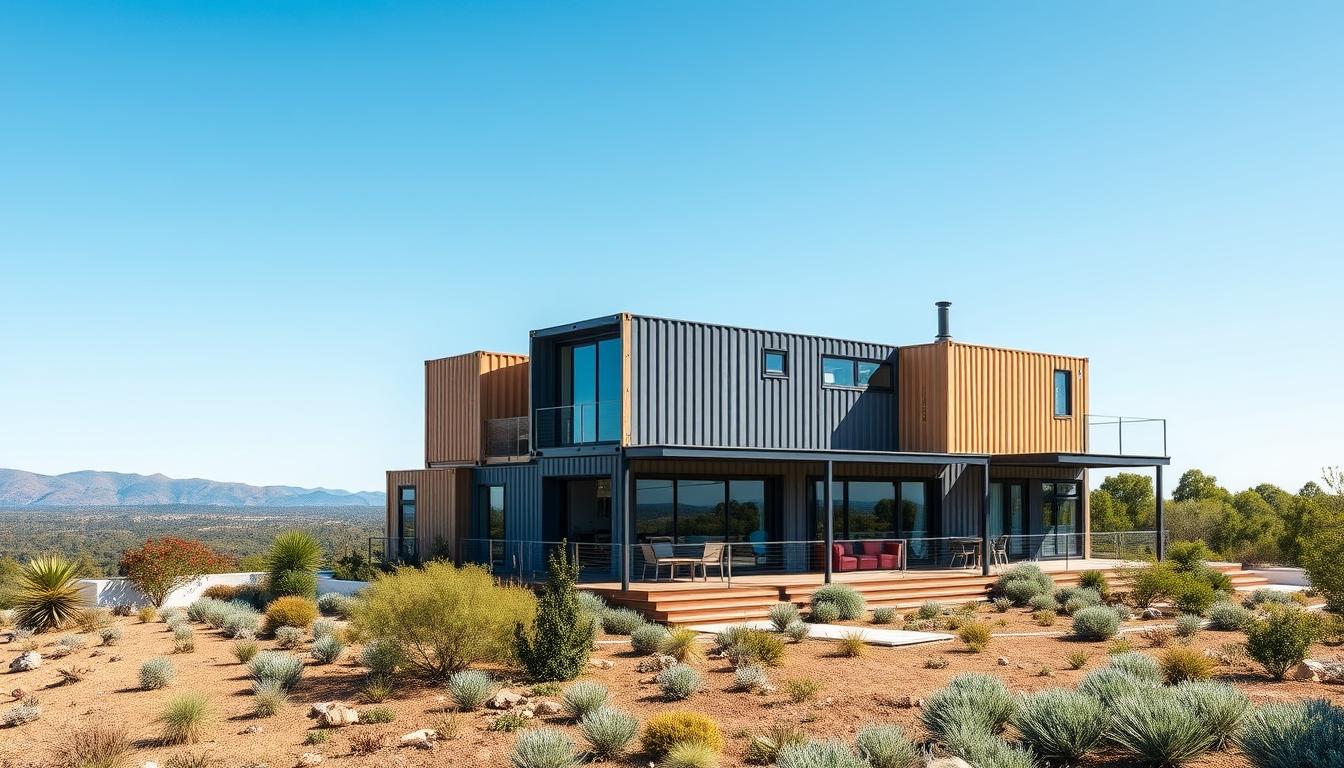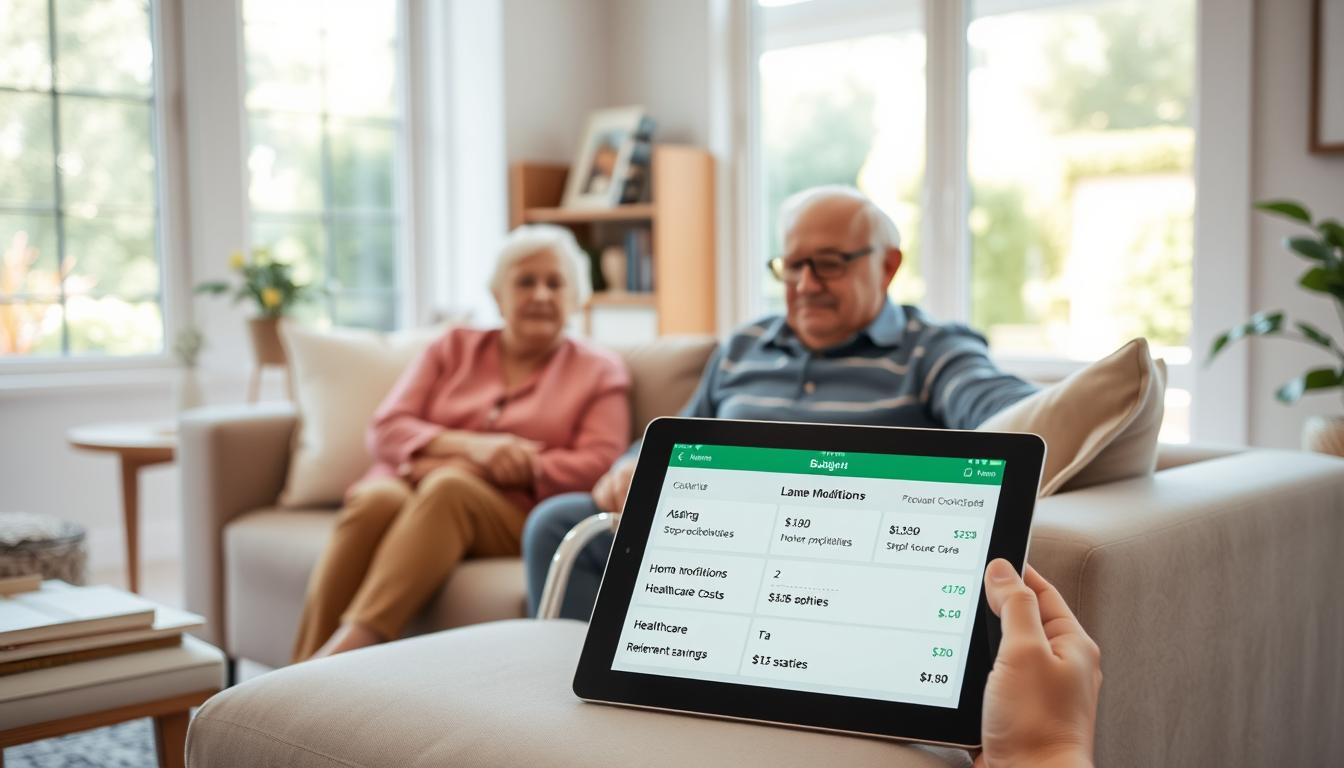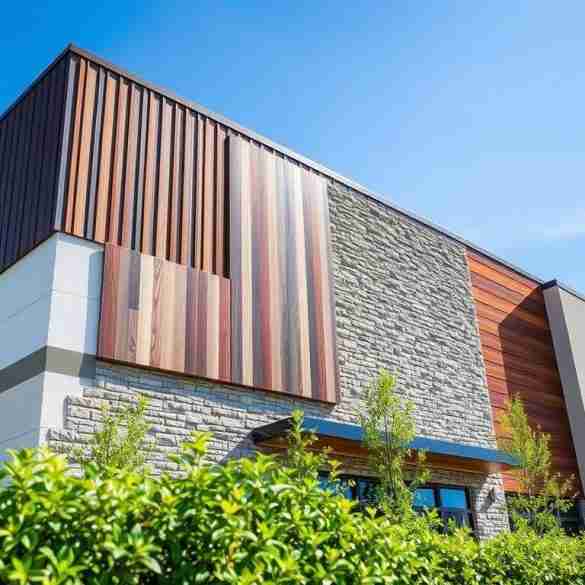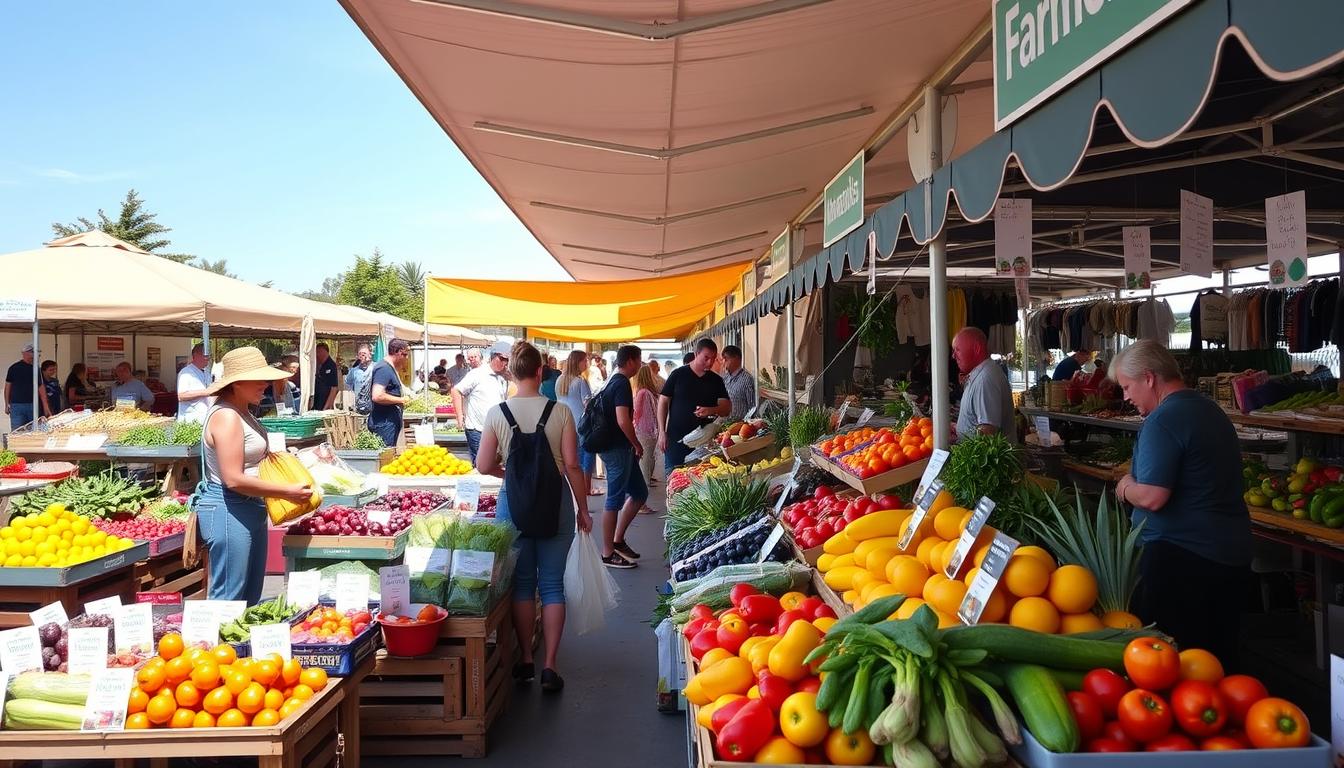The AuREUS Solar Revolution
The global pursuit of sustainable energy and effective waste management has found a remarkable convergence in AuREUS System Technology, an innovative solar panel system developed by Filipino engineering student Carvey Ehren Maigue.
This groundbreaking invention, which generates electricity from ultraviolet (UV) light using upcycled food waste, even without direct sunlight, represents a significant leap forward in addressing two of the planet’s most pressing environmental challenges.
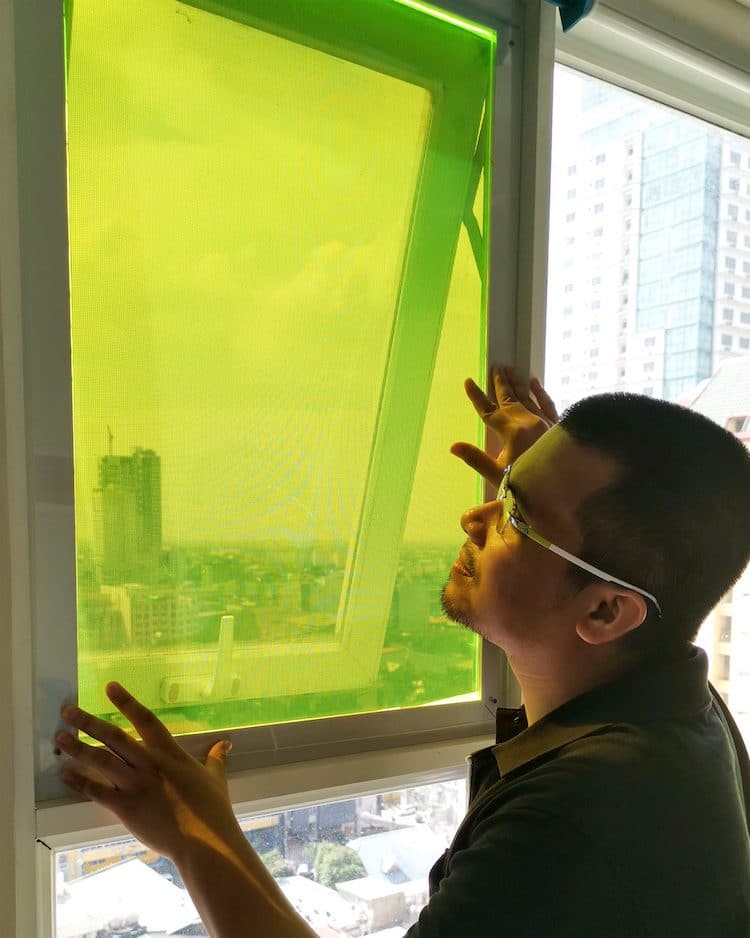
1. The Visionary Behind AuREUS
The story of AuREUS begins with the determination and inventive spirit of its creator, Carvey Ehren Maigue, whose journey from a student in Manila to an internationally recognized innovator underscores the power of perseverance and a clear vision for a sustainable future.
1.1. From Manila to Global Recognition
Carvey Ehren Maigue, a 27-year-old engineering student at Mapúa University in Manila, Philippines, a prominent engineering institution in the country, has navigated a challenging academic path. His decade-long educational journey, punctuated by necessary pauses due to financial constraints, required him to undertake prototyping and fabrication projects for other students to fund his studies.
These hands-on experiences, while born of necessity, inadvertently broadened his understanding of design, user impact, and the practicalities of bringing ideas to fruition. This prolonged engagement with real-world problem-solving, coupled with his inherent resolve, cultivated a deep well of practical ingenuity and persistence.
Sir James Dyson himself acknowledged Maigue’s “resolve and determination,” noting that he continued to develop his concept even after an initial unsuccessful attempt at the award in 2018. This demonstrates how personal challenges, when met with unwavering commitment, can forge the very qualities essential for transforming complex ideas into globally recognized solutions.
In 2020, Maigue’s dedication culminated in global acclaim when he was awarded the inaugural James Dyson Sustainability Award for AuREUS System Technology. This prestigious recognition celebrated his innovative material, which uniquely converts UV light into renewable energy using waste crops.
His pioneering work distinguished itself among over 1,700 entries from young inventors spanning 27 countries, highlighting its profound potential.
1.2. Engineering Dreams and Dyson’s Nod
Maigue’s ambition to become an engineer was ignited at the age of 13, during a laboratory class where his science teacher’s comment proved transformative. While watching a film about landing the space shuttle, his teacher remarked, “Carvey, I hope someday you will be someone like that,” a pivotal moment that sparked his enduring passion for physics and sciences.
This early encouragement fostered a lifelong drive to translate scientific principles into tangible products through engineering. This illustrates how a seemingly small interaction can ignite a profound, lasting passion, setting a career trajectory that ultimately leads to globally significant innovations.
His professional aspirations are further shaped by figures like Elon Musk and James Dyson, whose unwavering belief in their ideas and relentless pursuit of market solutions, even amidst skepticism, deeply inspire him. Maigue’s own journey with the James Dyson Award began in 2018 with an unsuccessful entry, yet he persisted, continuously refining the core concept and technology of AuREUS, leading to his eventual triumph in 2020.
He viewed the award process as an “acid test,” a crucial validation of his idea’s global relevance and importance. Reflecting on his win, Maigue articulated it as “both a beginning and an end”—the cessation of doubts regarding his invention’s global significance and the commencement of its journey to impact the world.
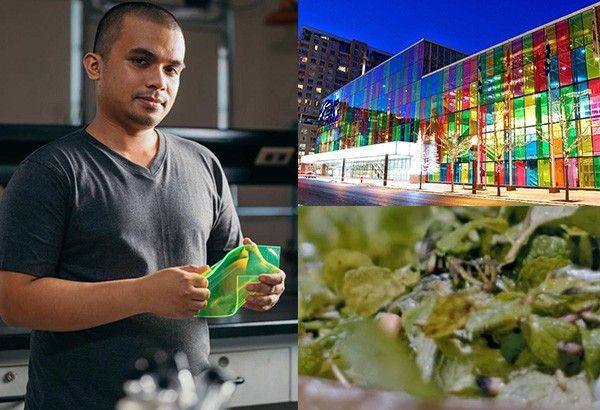
1.3. A Passion for Sustainable Solutions
Maigue’s motivation transcends mere technological advancement, rooted in a profound commitment to sustainability and a proactive approach to critical environmental issues. A guiding principle of his work is the development of systems that do not deplete current resources, advocating for a regenerative approach to technology.
A particularly impactful aspect of AuREUS’s sustainability lies in its innovative use of crops damaged by natural disasters, such as typhoons—events often intensified by climate change. By upcycling these otherwise discarded agricultural products, AuREUS not only significantly reduces waste but also provides a vital new income stream for affected farmers.
This approach, as Maigue emphasizes, offers benefits not just for future generations but also for “us, the present generation,” by addressing immediate problems. This demonstrates a sophisticated understanding of interconnected global problems, where the output of one challenge (damaged crops leading to food waste) becomes a valuable input for another solution (clean energy generation).
The sheer scale of global food waste, estimated at 1.2 billion tonnes annually, valued at $370 million, and capable of feeding 37 million people for a month, underscores the immense societal and environmental problem AuREUS aims to mitigate. This positions AuREUS as a truly comprehensive solution, showcasing how innovative, interdisciplinary thinking can create multi-faceted benefits that address complex environmental and socio-economic challenges simultaneously, moving beyond fragmented, single-issue fixes towards systemic sustainability.
His overarching vision is to make clean technology widely accessible, drawing a compelling parallel to how computing evolved from an exclusive tool for government and military to a ubiquitous presence in everyday smartphones.
2. Unpacking the AuREUS Innovation
At its core, AuREUS is a testament to biomimicry, translating the ethereal beauty of natural phenomena into a tangible, energy-generating solution.
2.1. Inspired by the Northern Lights
The fundamental technology behind AuREUS draws profound inspiration from the captivating natural phenomenon of the aurora borealis and australis. In these celestial displays, high-energy particles, such as gamma or UV rays, interact with luminescent particles in the Earth’s atmosphere, causing them to absorb energy and then re-emit it as visible light.
Maigue ingeniously applied this principle by extracting similar luminescent particles from organic sources, specifically fruits and vegetables. These extracted particles are then suspended within a resin substrate, forming a versatile material that is translucent and can be molded into various shapes, enabling diverse applications. This direct inspiration from the aurora borealis exemplifies biomimicry, an innovative approach that seeks sustainable solutions by emulating nature’s time-tested designs and processes.
Natural systems, having evolved over millennia, are inherently optimized for efficiency and resourcefulness. By observing and understanding how natural luminescent phenomena occur, Maigue was able to bypass traditional, often energy-intensive, material science pathways typically employed in solar energy development. This naturalistic approach potentially leads to a more organic, less resource-dependent, and inherently sustainable solution, highlighting biomimicry as a powerful paradigm for future sustainable innovations.
2.2. How Food Waste Becomes Power
AuREUS uniquely leverages organic luminescent compounds extracted directly from waste crops, specifically discarded fruits and vegetables. The process unfolds in several key steps. First, when UV radiation strikes the AuREUS material, the embedded luminescent particles absorb this high-energy UV light.
Crucially, the absorbed UV energy is then re-emitted by these particles as visible light. Photovoltaic (PV) cells, identical to those found in traditional solar panels, are strategically positioned along the edges of the AuREUS device—such as windows or walls—to capture this re-emitted visible light. This captured visible light is subsequently converted into usable direct current (DC) electricity. This generated electricity can then be directed to storage, batteries, or for immediate use by appliances.
The core operational mechanism of AuREUS—extracting luminescent particles from food waste—fundamentally challenges the linear economic model of “take-make-dispose.” By transforming agricultural waste from a liability, which often produces greenhouse gases in landfills, into a critical input for clean energy, AuREUS exemplifies a compelling circular economy application.
The fact that 1 kilogram of waste crop material can generate up to 108 watts of power provides a tangible metric for its potential value. This innovation serves as a powerful case study for the broader circular economy movement, showcasing how re-imagining waste streams can lead to the creation of highly valuable resources, driving both significant environmental benefits and new economic opportunities.
2.3. Capturing Invisible Light
In stark contrast to traditional silicon-based solar panels, which primarily absorb direct sunlight (comprising visible and infrared light) and necessitate consistent, unobstructed exposure for optimal performance, AuREUS is specifically engineered to harness UV radiation.
A pivotal advantage of AuREUS is its remarkable ability to generate electricity even on cloudy days, in shaded environments, or without direct sunlight. This is possible because UV rays, unlike visible light, readily penetrate clouds and scatter widely across the sky. Maigue’s initial understanding for this technology reportedly came from observing his UV-reactive glasses darkening even on overcast days.
Preliminary testing indicates that AuREUS panels can produce electricity nearly 50% of the time, even under dense cloud coverage. This represents a significant performance improvement compared to conventional photovoltaic (PV) cells, which typically operate at 10-25% or 15-22% efficiency under optimal sunlight conditions and experience drastic drops in non-optimal light.
The inherent intermittency of traditional solar power, its reliance on direct sunlight and specific angles, has been a significant barrier to its widespread adoption as a primary energy source. AuREUS’s unique ability to generate electricity from UV light even on cloudy days directly addresses this fundamental challenge.
This expanded operational window means more consistent energy production, reducing the need for extensive battery storage solutions or reliance on fossil fuel backups during periods of low direct sunlight, and broadening the geographic viability of solar power beyond traditionally sunny regions.
This innovation significantly enhances the reliability, practicality, and geographic applicability of solar energy, making it a more consistent and dependable power source in diverse weather conditions and urban environments.
3. Beyond Traditional Solar: The AuREUS Advantage
AuREUS offers a compelling alternative to conventional solar technology, distinguished by its ability to generate power in varied conditions, its versatile design, and its eco-friendly material composition.
3.1. Powering Through Cloudy Days
As previously discussed, the core strength of AuREUS lies in its capacity to capture UV radiation, which effectively penetrates cloud cover. This enables the system to function efficiently in low-light, cloudy, or shaded conditions—scenarios where traditional solar panels experience significant performance degradation. This consistent energy production capability makes AuREUS particularly advantageous for regions characterized by unpredictable weather patterns or for dense urban environments where direct sunlight access might be limited by towering buildings.
The reported ability of AuREUS to produce electricity nearly 50% of the time, in stark contrast to the 10-25% operational efficiency of conventional photovoltaic cells, clearly underscores its superior reliability in diverse conditions.
By operating efficiently in varied light conditions and being inherently adaptable to vertical surfaces, AuREUS facilitates a significant shift towards more distributed and localized energy generation. Unlike a sole reliance on large, centralized solar farms, which can be vulnerable to single points of failure, land-use conflicts, or transmission losses, AuREUS allows individual buildings and structures to become “performative generators”.
This decentralization significantly enhances grid resilience by distributing power sources, reduces energy losses during long-distance transmission, and makes energy access more equitable, particularly in densely populated urban areas or remote communities where grid infrastructure is limited. This technology could foster a paradigm shift towards greater energy self-sufficiency for individual buildings, neighborhoods, and even entire communities, thereby lessening dependence on a centralized grid and substantially increasing overall energy security and stability.
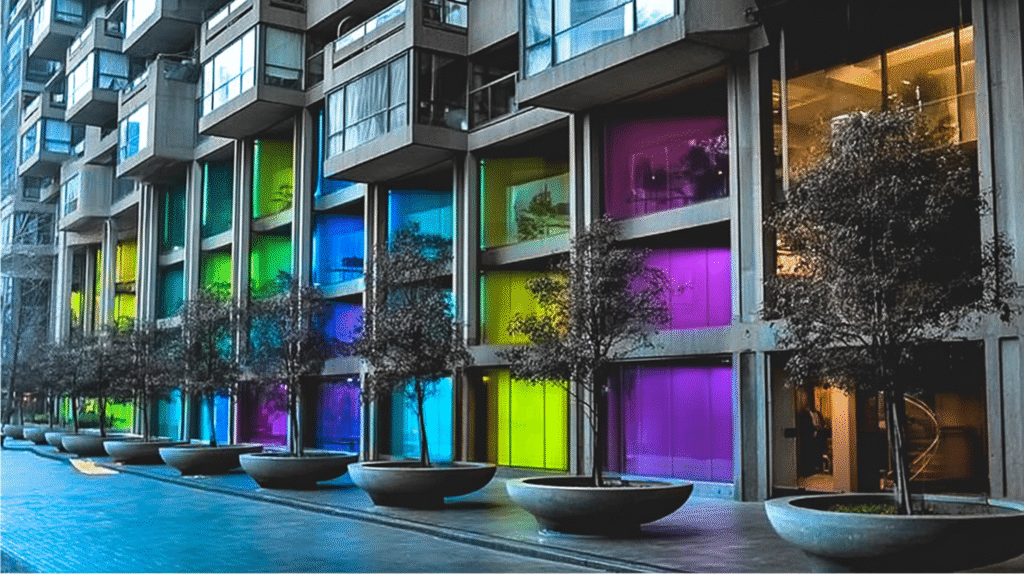
3.2. Versatility in Design and Placement
Unlike rigid, silicon-based solar panels that typically demand extensive, unobstructed land or rooftop areas for optimal performance, AuREUS offers unparalleled flexibility in its integration. Its flexible resin substrate allows it to be molded into various shapes and applied to diverse surfaces.
This adaptability means it can be seamlessly incorporated into building facades, windows (specifically, the “Borealis Solar Window”), and walls (as the “Astralis Solar Wall”), effectively transforming these structures into “vertical solar farms”. This vertical application is particularly advantageous for urban environments where conventional solar panel space is severely limited.
Maigue’s long-term vision extends even further, envisioning broader applications that include embedding AuREUS into fabrics for wearable solar technology, and creating curved plates for use on electric cars, airplanes, and boats. Traditionally, building elements like windows and walls have served primarily passive roles. AuREUS fundamentally redefines their function by transforming them into active, energy-generating components. This shifts the paradigm of architecture from merely being energy-efficient to becoming actively energy-productive.
This deep integration represents a significant departure from traditional bolt-on solar solutions, allowing for more holistic, aesthetically pleasing, and functionally integrated sustainable design. This innovation opens up entirely new possibilities for urban planning and building design, envisioning a future where virtually every surface exposed to UV light becomes a potential power source, accelerating the transition to self-sufficient, net-zero energy buildings, particularly crucial in dense urban environments where space is at a premium.
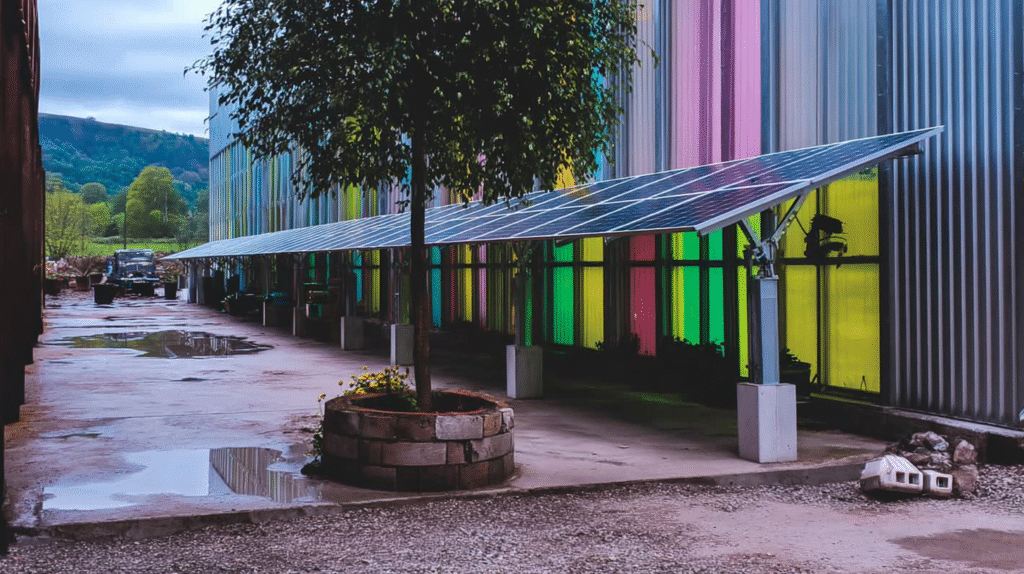
3.3. Eco-Friendly Materials, Cost-Effective Potential
A defining characteristic of AuREUS panels is their composition: they are made using recycled plant waste from fruits and vegetables. This innovative material sourcing significantly reduces dependence on rare or expensive materials typically utilized in traditional silicon-based solar panels. This approach not only effectively reduces agricultural waste but also actively promotes a circular economy model, thereby making the technology inherently environmentally sustainable and potentially more cost-effective in the long run.
Furthermore, the upcycling of agricultural waste creates a vital new income stream for farmers, helping them mitigate significant losses incurred from damaged or unsold crops. This could also lead to reduced daily living costs for farmers by providing a clean, unlimited energy source directly at their farms. The direct economic benefit to farmers, who can now sell damaged or unsold crops for AuREUS production, fundamentally transforms a previous liability (waste) into a valuable asset (new revenue stream).
This directly addresses a significant pain point for agricultural communities, who often face substantial losses (between 22,000 and 37,000 tonnes of produce wasted annually on farms) due to factors beyond their control, such as environmental challenges, changing food standards, or shifts in retail demands. By creating a new market for these crops, AuREUS fosters a more resilient and diversified income model for farmers, thereby significantly reducing their financial risks and enhancing their economic stability. AuREUS transcends being merely a green technology; it functions as a powerful economic development tool for agricultural sectors, cultivating a symbiotic relationship between sustainable energy production and rural livelihoods, ultimately strengthening local economies and enhancing the resilience of the food supply chain by repurposing waste.
Table 1: AuREUS vs. Traditional Solar Panels: A Comparative Overview
| Feature | AuREUS Solar Panels | Traditional Solar Panels (Silicon-based) |
| Primary Energy Source | Ultraviolet (UV) light | Direct Sunlight (visible and infrared light) |
| Functionality on Cloudy Days | Highly efficient; UV light penetrates clouds, allowing consistent energy generation | Significant efficiency drop; requires direct sunlight for optimal performance |
| Time Producing Electricity | Nearly 50% of the time, even in dense cloud coverage | 10-25% or 15-22% efficiency under optimal sunlight; drops significantly without direct sun |
| Material Source | Organic luminescent particles extracted from food waste (fruits & vegetables) | Silicon, rare metals, and other manufactured components |
| Installation Flexibility | Highly versatile; can be integrated into vertical surfaces (windows, walls, facades), curved surfaces, and potentially fabrics | Typically rigid; requires flat, unobstructed land or rooftop areas |
| Environmental Impact | Reduces food waste, promotes circular economy, lowers carbon footprint | Manufacturing can be resource-intensive; end-of-life disposal challenges |
| Longevity/Durability | Under ongoing research; organic compounds may degrade over time | Designed for 25+ years of operation |
4. A Dual Solution: Energy and Waste
AuREUS stands out as a unique innovation that simultaneously addresses two critical global challenges: the staggering problem of food waste and the urgent need for clean energy.
4.1. Tackling Global Food Waste
Global food waste represents an enormous environmental and humanitarian crisis. An estimated 1.2 billion tonnes of food are wasted annually, accounting for 15.3% of all food produced worldwide. This staggering amount is equivalent to $370 million in value and could theoretically feed 37 million people for an entire month.
A significant portion of this waste occurs directly on farms, where between 22,000 and 37,000 tonnes of produce are discarded annually in the UK alone—enough to provide 150,000 to 250,000 people with five daily portions of fruits and vegetables for a year. Factors contributing to this waste include environmental challenges (like severe weather), evolving food standards, mishandling during harvest and transport, and shifts in retail demands, many of which are beyond farmers’ control.
AuREUS directly confronts this problem by ingeniously upcycling food waste, transforming agricultural byproducts that would otherwise rot into a valuable, functional technology for energy generation. While many sustainability initiatives rely on regulatory mandates or ethical considerations, AuREUS introduces a direct and compelling economic incentive for farmers to reduce waste. By providing a viable market for crops that would otherwise be discarded due to cosmetic imperfections, weather damage, or supply chain inefficiencies,
AuREUS creates a new and sustainable revenue stream. This fundamentally shifts the perception of food waste from a costly disposal problem to a valuable raw material, thereby driving behavioral change and encouraging waste reduction through clear economic viability rather than just environmental mandates. This model offers a powerful template for how market-based solutions can effectively drive sustainable practices, demonstrating that by creating tangible value from what was previously considered waste, innovations can foster both significant environmental benefits and new economic opportunities.
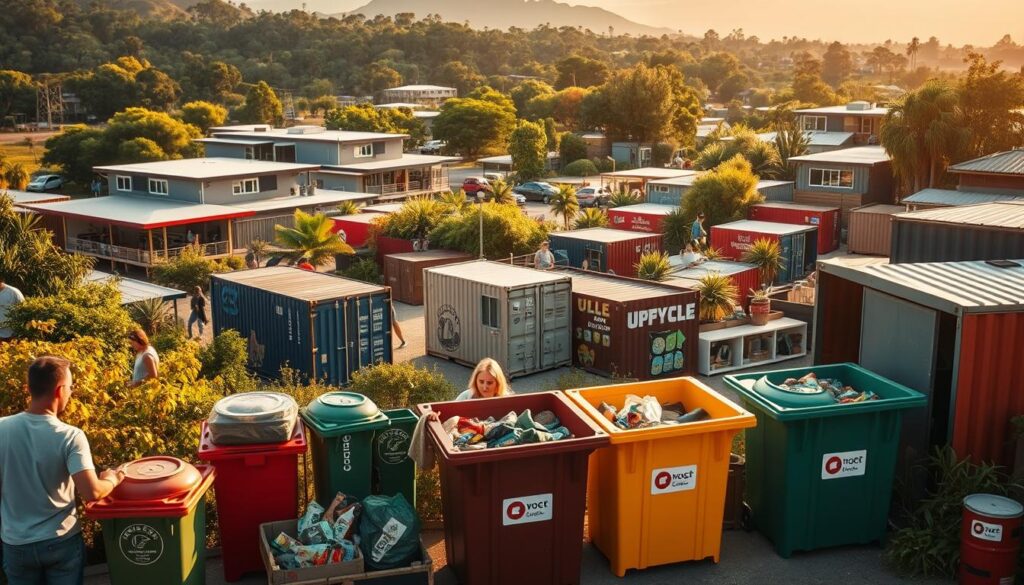
4.2. Empowering Agricultural Communities
AuREUS technology offers a transformative solution for agricultural communities by enabling farmers to upcycle waste generated during farming and retailing processes. This innovative approach directly helps farmers mitigate significant financial losses and manage risks more effectively, especially in regions prone to natural disasters.
The innovation provides a crucial new income source for farmers, particularly those whose crops have been damaged by severe weather events, which are increasingly linked to climate change. This offers a much-needed economic buffer in unpredictable agricultural landscapes.
Furthermore, the ability of AuREUS panels to harness UV radiation—a clean and unlimited energy source—can substantially reduce daily living costs for farmers. This means more affordable, accessible power for their homes, essential farm equipment, and critical storage facilities, strengthening their operational capacity and financial stability. The dual benefit that AuREUS provides to farmers—a new income stream from previously wasted crops and reduced energy costs—establishes a powerful positive feedback loop. Farmers, who are often on the front lines of climate change impacts, gain a vital financial buffer against the increasing frequency and severity of crop losses.
Simultaneously, they gain access to affordable, clean energy, which is essential for modernizing agricultural practices. This holistic approach not only strengthens rural economies but also significantly enhances their capacity to adapt to and withstand changing environmental conditions, fostering greater self-sufficiency. AuREUS serves as an exemplary model for “just transition” technologies, demonstrating how climate solutions can be designed to not only address pressing environmental problems but also deliver tangible socio-economic benefits to vulnerable communities, thereby promoting equity and inclusivity in the global transition towards renewable energy and sustainable development.
4.3. A Step Towards Climate Mitigation
By actively reducing the volume of food waste, AuREUS directly contributes to climate change mitigation. This is crucial because rotting organic matter in landfills decomposes anaerobically, producing potent greenhouse gases, most notably methane, which has a far greater short-term warming potential than carbon dioxide.
Furthermore, by harnessing UV radiation as a clean, virtually unlimited energy source, AuREUS reduces societal reliance on fossil fuels. This displacement of conventional energy sources leads to a direct decrease in carbon emissions and a lower overall carbon footprint for energy generation.
Maigue’s invention is deeply aligned with the broader global objectives of fostering a “circular economy” and making clean energy more accessible to people. It represents a significant step away from a linear, resource-depleting economic model towards one that prioritizes regeneration and efficient resource utilization.
The climate benefit of AuREUS is not a singular achievement but rather a powerful synergy. It addresses climate change on two critical and interconnected fronts: firstly, by preventing the release of potent methane emissions from decomposing food waste in landfills, and secondly, by displacing fossil fuel-based electricity generation with clean, renewable energy. This dual impact significantly amplifies its effectiveness as a climate solution, making it more impactful than technologies that only address one aspect in isolation.
The underlying principle of a “circular economy” is central to this synergy, moving beyond simple recycling to comprehensive resource utilization and value creation. This demonstrates the immense power and efficiency of integrated solutions in climate action, illustrating how tackling one environmental challenge can simultaneously contribute significantly to another, leading to more efficient, comprehensive, and ultimately more successful pathways to global sustainability.
5. Transforming Our Built Environment
The innovative design and material properties of AuREUS hold the potential to fundamentally reshape urban landscapes, turning passive structures into active contributors to energy generation.
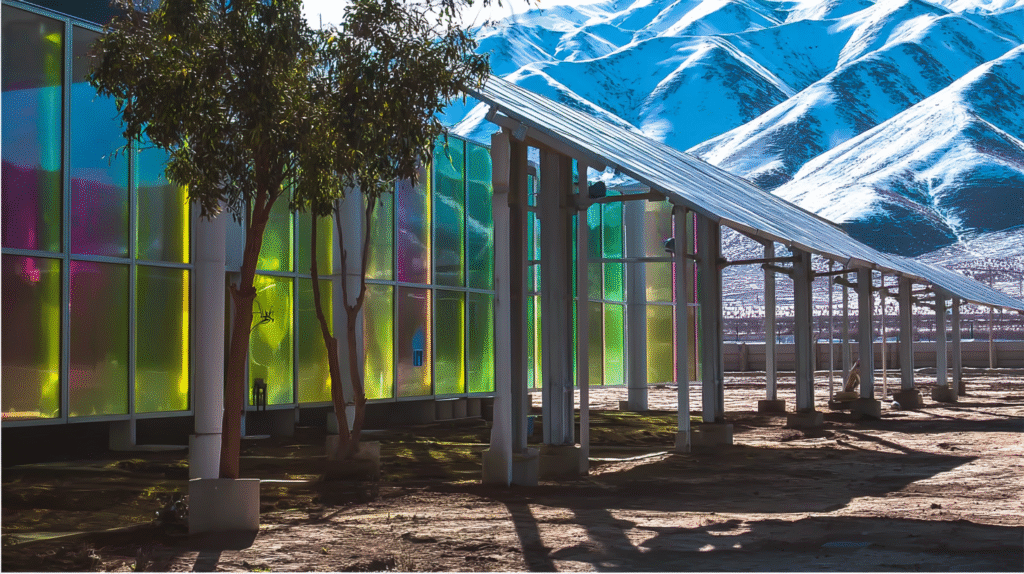
5.1. Windows and Walls as Power Generators
AuREUS is designed with specific architectural applications in mind, notably as the “Borealis Solar Window” and “Astralis Solar Wall” products. These innovations allow for the seamless integration of energy generation directly into the architectural fabric of buildings. By transforming conventional building components, these applications enable structures to become “performative generators,” significantly enhancing their energy efficiency and making a direct contribution to sustainable city planning.
The inherent translucent quality of AuREUS and its moldable nature make it an ideal material for seamless incorporation into building facades and windows. This means buildings can actively generate electricity without compromising their aesthetic appeal or design integrity, offering a harmonious blend of form and function.
Traditionally, building elements like windows and walls have served primarily passive roles—structural support, aesthetic appeal, and insulation. AuREUS fundamentally redefines their function by transforming them into active, energy-generating components. This shifts the paradigm of architecture from merely being energy-efficient to becoming actively energy-productive.
This deep integration represents a significant departure from traditional bolt-on solar solutions, allowing for more holistic, aesthetically pleasing, and functionally integrated sustainable design. This innovation opens up entirely new possibilities for urban planning and building design, envisioning a future where virtually every surface exposed to UV light becomes a potential power source, accelerating the transition to self-sufficient, net-zero energy buildings, particularly crucial in dense urban environments where space is at a premium.
5.2. The Rise of Vertical Solar Farms
The remarkable adaptability of AuREUS allows for its application to vertical surfaces, effectively transforming existing structures into “vertical solar farms”. This innovative approach circumvents the traditional limitations of solar panel placement. This capability presents a highly scalable solution for seamlessly integrating renewable electricity into urban environments, especially in cities where expansive land or rooftop areas for conventional horizontal solar panels are often scarce. Ultimately, this technology holds the potential to transform entire cities into self-sustaining power sources, significantly reducing their reliance on traditional, often land-intensive, solar farms that require vast tracts of land.
Urban areas are characterized by high energy consumption but are severely constrained by space for large-scale energy infrastructure, including traditional solar installations. The concept of vertical solar farms, enabled by AuREUS, dramatically increases the potential surface area for energy capture within a city’s existing footprint. This is critically important for achieving urban energy independence and ambitious sustainability goals without encroaching on valuable green spaces, agricultural land, or contributing to urban sprawl.
This innovation fundamentally shifts the paradigm of urban energy supply. Instead of being mere consumers of energy, cities can become significant producers, fostering greater energy security, reducing the environmental impact associated with long-distance energy transmission, and offering a blueprint for truly sustainable urban development.
5.3. Expanding Beyond Buildings
Maigue’s ambitious vision for AuREUS extends far beyond static building applications. He is actively exploring its integration into fabrics for wearable solar technology, allowing individuals to generate power on the go. He also envisions the creation of curved AuREUS plates for seamless use on electric cars, airplanes, and boats, transforming vehicles into mobile power generators.
Furthermore, public infrastructure elements such as bus stops, train stations, and glass-covered walkways could integrate AuREUS panels, generating electricity without compromising their aesthetic appeal or functionality.
The vision of integrating AuREUS into clothing, vehicles, and public infrastructure represents a profound shift towards ubiquitous energy harvesting. This implies a future where energy generation is no longer confined to dedicated power plants or rooftop panels but becomes an invisible, integrated, and active part of daily life and movement. For instance, clothing could passively charge personal devices, or electric vehicles could extend their range through integrated solar surfaces.
This fundamentally democratizes energy production, making it accessible to individuals and systems in entirely new and pervasive ways. This could lead to a future where virtually any surface exposed to UV light, whether static or mobile, becomes an active participant in energy generation, blurring the traditional lines between consumer products, infrastructure, and power production, potentially driving down overall energy demand from centralized sources and fostering greater energy independence for individuals and systems.
6. The Road Ahead for AuREUS
While AuREUS represents a revolutionary step in sustainable technology, its journey from prototype to widespread adoption involves navigating significant challenges related to efficiency, durability, and scalability.
6.1. Optimizing Efficiency and Durability
Currently, early prototypes of AuREUS panels exhibit lower energy conversion rates compared to conventional silicon-based solar panels. While traditional panels can achieve peak efficiencies of 15-22%, AuREUS panels still require optimization to match these levels in terms of converting absorbed light into electricity. However, it is important to note the distinction: AuREUS generates electricity nearly 50% of the time due to its UV capture ability, even if its instantaneous conversion rate is lower. Ongoing research is intensely focused on enhancing the UV light energy conversion process to improve overall performance.
A significant challenge lies in ensuring the long-term durability and stability of the organic compounds used in AuREUS. These natural materials may degrade over time when exposed to environmental factors such as heat, moisture, and pollutants. This is a critical area, as traditional solar panels are designed for a lifespan exceeding 25 years. Extensive research is underway to improve the stability and lifespan of these organic materials for reliable, long-term deployment.
Scientists are actively exploring the development of synthetic or bio-engineered dyes. These alternatives aim to replicate the luminescent efficiency of natural compounds while addressing degradation concerns, with an ambitious aspiration to reach 100% material extraction efficiency compared to the current 80%.
This highlights a common challenge in the early stages of disruptive sustainable innovations: balancing the revolutionary eco-friendly approach with established performance benchmarks. The explicit goal of reaching 100% material extraction efficiency and optimizing conversion is paramount for AuREUS to achieve widespread commercial viability and compete effectively.
6.2. Scaling Production and Material Research
The AuREUS technology is currently in a critical phase of research and testing, specifically focused on its broader applications, including the potential for mass production. This indicates a strategic move towards commercialization and widespread availability. One of the most significant challenges in scaling AuREUS technology is its current reliance on specific fruit-based dyes. The luminescent compounds essential for UV light absorption are currently derived from a limited selection of fruits and vegetables, which inherently constrains the capacity for large-scale mass production.
Out of 78 crops initially tested, only nine have demonstrated high potential for containing the necessary luminescent particles, particularly those with red, orange, yellow, and green hues. Ongoing research is therefore intensely focused on optimizing the material extraction processes from these promising crops.
To overcome the supply chain limitations posed by natural organic waste, scientists are actively searching for synthetic or alternative blue dyes that can effectively replicate the same luminescent effect. This diversification in material sourcing is crucial for achieving the scale required for global adoption. While the utilization of food waste as a material source is environmentally brilliant and aligns perfectly with circular economy principles, the current reliance on specific organic compounds extracted from a limited number of crops presents a significant bottleneck for achieving mass production.
This is a classic “scaling challenge” inherent in many bio-based innovations. The strategic pursuit of synthetic or alternative dyes indicates a pragmatic approach, showing an understanding that while the original sustainable ethos is vital, practical demands of global commercialization necessitate balancing the ideal with the achievable, potentially leading to hybrid material solutions.
6.3. A Glimpse into a Sustainable Future
The development of AuREUS Solar Panels represents a monumental breakthrough in the fields of sustainable energy generation and waste reduction. It offers a uniquely creative and integrated approach to addressing both pressing energy needs and the global challenge of food waste. As ongoing research continues to refine and optimize the technology, this innovation holds the profound potential to unlock entirely new possibilities for renewable power generation and resource utilization. This will lead to enhanced environmental sustainability and deliver significant economic benefits to communities worldwide.
Maigue’s inspiring vision is to bring solar energy capture “closer to people,” making it far more accessible and seamlessly integrated into daily life. He draws a powerful parallel to how smartphones revolutionized computing, transforming a complex technology once exclusive to governments and military into an everyday tool.
The collective efforts in research and development aim to transition AuREUS into a mainstream energy solution. If successful, this could significantly reduce global reliance on traditional, land-intensive solar farms and actively contribute to the creation of self-sufficient buildings and truly smart, sustainable cities. AuREUS is more than just a novel solar panel; it embodies a broader, holistic philosophy of resourcefulness, circularity, and integrated sustainability.
Maigue’s explicit ambition to make solar energy “more accessible” and “closer to people” resonates deeply with the democratizing power of technology, suggesting a shift from centralized power to distributed generation. Its success could serve as a powerful catalyst for systemic change in how cities are designed, how waste is managed, how agricultural communities are empowered, and even how individual energy autonomy is conceived. This demonstrates the immense power of interdisciplinary, problem-solving innovation that aims for systemic impact rather than merely incremental improvements.
Final Thoughts:
Carvey Ehren Maigue’s AuREUS System Technology stands as a beacon of innovation, offering a compelling vision for a more sustainable future. By ingeniously harnessing luminescent particles from food waste to generate electricity from UV light, AuREUS presents a multi-faceted solution to critical global challenges.
Its ability to function effectively even on cloudy days and its remarkable versatility in application—from building facades to potentially wearable fabrics and vehicles—distinguish it from conventional solar panels, expanding the reach and reliability of renewable energy.
Beyond its technical prowess, AuREUS embodies a powerful narrative of resourcefulness and social impact. It transforms agricultural waste, a significant environmental and economic burden, into a valuable resource, simultaneously empowering farming communities with new income streams and reduced energy costs.
This symbiotic relationship between clean energy and waste management exemplifies a truly circular economy approach, offering profound benefits for climate change mitigation by reducing both methane emissions from rotting food and carbon emissions from fossil fuels.
While the technology is still in its developmental stages, with ongoing research focused on optimizing energy conversion rates, ensuring long-term durability, and scaling production through diversified material sourcing, its foundational principles are revolutionary. AuREUS not only promises to redefine how cities integrate energy generation into their very infrastructure but also inspires a broader understanding of how interdisciplinary innovation can lead to systemic, equitable, and sustainable solutions for a more resilient world.
Frequently Asked Questions about AuREUS System Technology:
Q: What is AuREUS System Technology?
A: AuREUS (Aurora Renewable Energy & UV Sequestration) is an innovative solar panel system developed by Carvey Ehren Maigue that generates electricity from ultraviolet (UV) light, even without direct sunlight, using luminescent particles extracted from food waste .
Q: Who invented AuREUS System Technology?
A: AuREUS was invented by Carvey Ehren Maigue, a Filipino engineering student from Mapúa University in Manila, Philippines . He won the inaugural James Dyson Sustainability Award in 2020 for his invention .
Q: How does AuREUS generate electricity?
A: AuREUS works by embedding luminescent particles, extracted from waste crops, into a resin substrate . When UV radiation strikes the material, these particles absorb the UV light and re-emit it as visible light . Photovoltaic (PV) cells placed along the edges of the device then capture this visible light and convert it into usable direct current (DC) electricity .
Q: What are the main advantages of AuREUS over traditional solar panels?
A: AuREUS offers several advantages: it can generate electricity even on cloudy days or in shaded environments by capturing UV light, which penetrates clouds . It uses recycled food waste, making it sustainable and potentially cost-effective . Its flexible design allows integration into various surfaces like windows, walls, and even fabrics, unlike rigid traditional panels .
Q: What types of food waste are used in AuREUS panels?
A: AuREUS uses luminescent particles extracted from various fruits and vegetables . Out of 78 crops tested, nine have shown high potential, particularly those with red, orange, yellow, and green hues .
Q: Where can AuREUS technology be applied?
A: AuREUS can be integrated into building facades, windows (as “Borealis Solar Window”), and walls (as “Astralis Solar Wall”), effectively turning structures into “vertical solar farms” . Future applications under research include integration into fabrics for wearable solar technology, curved plates for electric cars, airplanes, and boats, and public infrastructure like bus stops and train stations .
Q: What is the current development status and what challenges does AuREUS face?
A: AuREUS is currently in a critical phase of research and testing for broader applications and mass production . Challenges include optimizing its energy conversion rates to match traditional solar panels (currently lower, though it generates electricity more consistently) , ensuring the long-term durability and stability of its organic compounds , and overcoming material supply chain limitations by researching synthetic or alternative dyes .
Q: How does AuREUS contribute to environmental sustainability?
A: AuREUS significantly contributes to environmental sustainability by upcycling food waste, which reduces the volume of organic matter rotting in landfills and producing potent greenhouse gases like methane . By generating clean electricity from UV light, it also reduces reliance on fossil fuels, thereby lowering carbon emissions and promoting a circular economy model . It also provides a new income stream for farmers by utilizing damaged crops .

